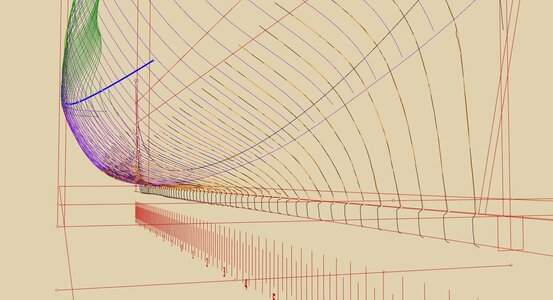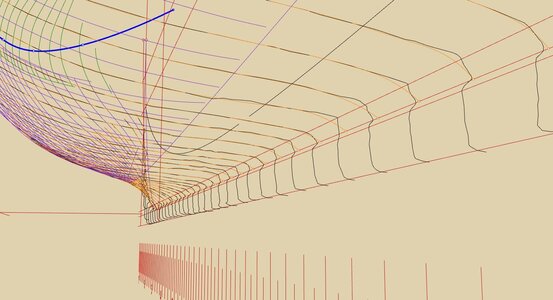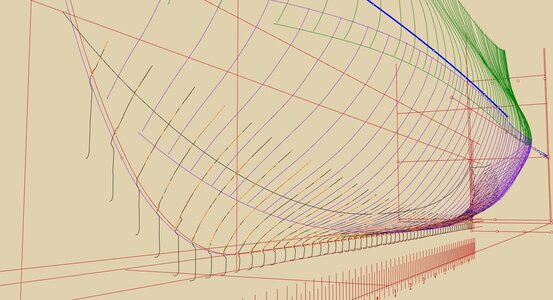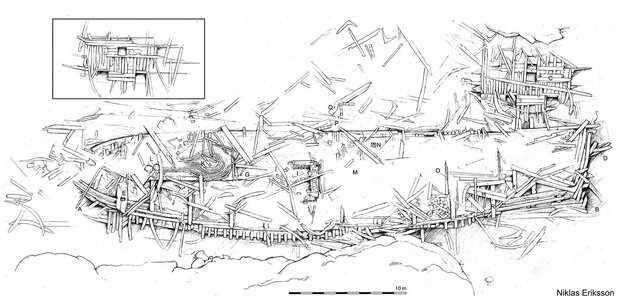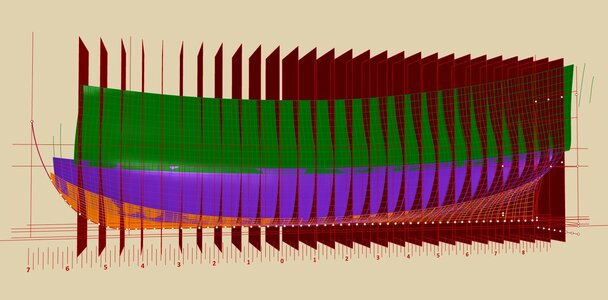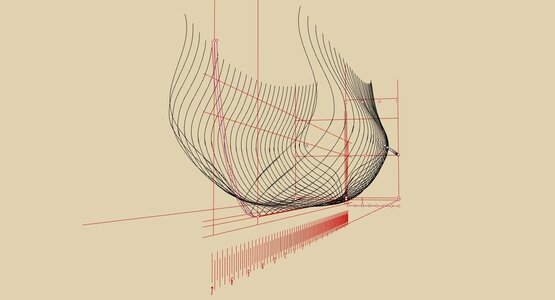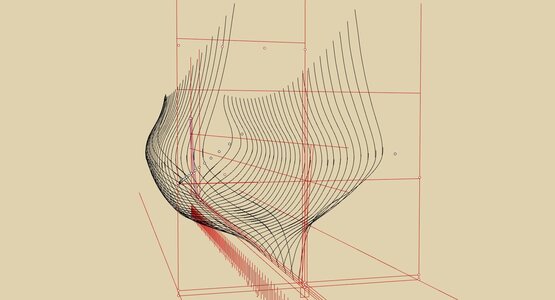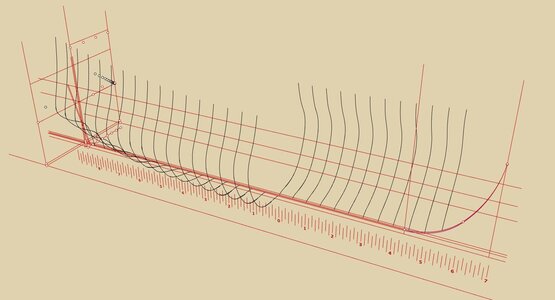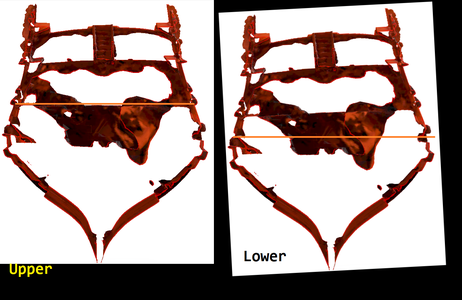.
Ah, yes, indeed, I did not elaborate on this earlier. After importing the 3D model (OBJ) into Rhino, I made adjustments to its shape by rotations, twists and bends, mostly of a local nature, to get it at least approximately symmetrical. The reference lines were the keel (at the bottom) and the masts and capstan (at the top). Just as few of these treatments as were absolutely necessary.
In the second stage of shape correction (the initial straightening was still not perfect), I laterally shifted some of the hull intersection lines, mainly at the bow and stern, aligning them with the keel, which I defined as having an equal width throughout. I realize that both the real ships and this model have a slightly tapered keel, but in the tracing process in the shipyard this has not yet had to be taken into account. Even more important, the differences are minimal, and defining tapered keel would unnecessarily complicate the 3D model without significant benefit. Anyway, I will remember this slight difference when fitting the supposed design curves.
Finally I decided to use only the left half. The right half was discarded as being more irregular and shrunken.
In fact, I now have two significant problems to solve. The first is to find the longitudinal position of the master frame. The issue is that the maximum breadth is in a different place at the level of the wales, and in a significantly different place in the lower parts of the hull (by about 4–6 timber&room intervals).
The second dilemma that now needs to be resolved is the overall breadth of the hull. Admittedly, the difference to
Naseby's full 42ft is only about 2.5–3 mm at this scale, but in practice this makes quite a difference to the precise fitting of the supposed design lines, which you are certainly aware of. Be that as it may, I will point to it later, when hopefully this become more clear.
.




